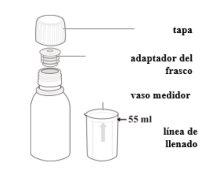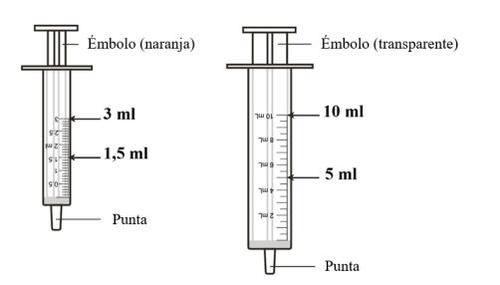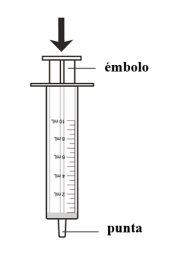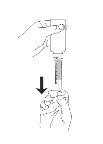

ТАМИФЛЮ 6 мг/мл ПОРОШОК ДЛЯ ПРИГОТОВЛЕНИЯ ОРАЛЬНОГО РАСТВОРА

Спросите врача о рецепте на ТАМИФЛЮ 6 мг/мл ПОРОШОК ДЛЯ ПРИГОТОВЛЕНИЯ ОРАЛЬНОГО РАСТВОРА

Инструкция по применению ТАМИФЛЮ 6 мг/мл ПОРОШОК ДЛЯ ПРИГОТОВЛЕНИЯ ОРАЛЬНОГО РАСТВОРА
Введение
Прошпект:информация для пользователя
Тамифлю 6мг/мл порошок для пероральной суспензии
озельтамивир
Прочитайте внимательно весь прошпект перед началом приема лекарства, поскольку он содержит важную информацию для вас.
?Сохраните этот прошпект, поскольку вам может потребоваться прочитать его снова.
?Если у вас есть какие-либо вопросы, проконсультируйтесь с вашим врачом или фармацевтом.
?Это лекарство было назначено только вам и не должно быть передано другим людям, даже если у них такие же симптомы, как у вас, поскольку оно может нанести им вред.
?Если вы испытываете побочные эффекты, проконсультируйтесь с вашим врачом или фармацевтом, даже если это побочные эффекты, которые не указаны в этом прошпекте. См. раздел 4.
Содержание прошпекта
- Что такое Тамифлю и для чего он используется
- Что вам нужно знать перед началом приема Тамифлю
- Как принимать Тамифлю
- Возможные побочные эффекты
- Хранение Тамифлю
- Содержание упаковки и дополнительная информация
1. Что такое Тамифлю и для чего он используется
?Тамифлю используется у взрослых, подростков, детей и младенцев (включая новорожденных) для лечения гриппа(инфлюэнца). Он может быть использован, когда у вас есть симптомы гриппа и известно, что вирус гриппа присутствует в популяции.
?Тамифлю также может быть назначен взрослым, подросткам, детям и младенцам старше 1 года для профилактики гриппав отдельных случаях, например, если вы были в контакте с кем-то, у кого есть грипп.
?Тамифлю может быть назначен взрослым, подросткам, детям и младенцам (включая новорожденных) в качестве профилактического леченияв исключительных обстоятельствах, например, если есть глобальная эпидемия гриппа (пандемия) и когда сезонная вакцина против гриппа не может обеспечить достаточную защиту.
Тамифлю содержит озельтамивир, который относится к группе лекарств, называемых ингибиторами нейраминидазы. Эти лекарства предотвращают распространение вируса гриппа в организме. Они помогают облегчить или предотвратить симптомы инфекции, вызванной вирусом гриппа.
Грипп - это инфекция, вызванная вирусом. Симптомы гриппа часто включают внезапную лихорадку (более 37,8°C), кашель, насморк или заложенность носа, головные боли, мышечные боли и сильную усталость. Эти симптомы также могут быть вызваны другими инфекциями. Настоящая инфекция гриппа возникает только во время ежегодных вспышек (эпидемий), когда вирусы гриппа распространены в популяции. Вне эпидемических периодов симптомы, похожие на грипп, обычно вызваны другим типом заболевания.
2. Что вам нужно знать перед началом приема Тамифлю
Не принимайте Тамифлю
?если вы аллергичны(гиперчувствительны) к озельтамивиру или любому другому компоненту Тамифлю, указанному в разделе 6.
Если это происходит с вами, проконсультируйтесь с вашим врачом. Не принимайте Тамифлю.
Предостережения и меры предосторожности
Перед приемом Тамифлю убедитесь, что ваш врач знает, если
?вы аллергичны к другим лекарствам
?у вас есть заболевание почек. Если это так, может быть необходимо скорректировать вашу дозу.
? если у вас есть тяжелое заболевание, которое требует немедленной госпитализации.
? если ваша иммунная системане функционирует должным образом.
? если у вас есть хроническое заболевание сердцаили дыхательное заболевание.
Во время лечения Тамифлю немедленно проконсультируйтесь с врачом
? если вы заметите изменения в вашем поведении или настроении (нейропсихиатрические события), особенно если они возникают у детей и подростков. Это могут быть признаки редких, но серьезных побочных эффектов.
Тамифлю не является вакциной против гриппа
Тамифлю не является вакциной: он используется для лечения инфекции или предотвращения распространения вируса гриппа. Вакцина обеспечивает вам антитела против вируса. Тамифлю не влияет на эффективность вакцины против гриппа, и ваш врач может назначить вам оба.
Использование Тамифлю с другими лекарствами
Сообщите вашему врачу или фармацевту, если вы принимаете другие лекарства или недавно принимали какие-либо лекарства. Это включает даже лекарства, приобретенные без рецепта.
Следующие лекарства особенно важны:
? хлорпропамид (используется для лечения диабета)
? метотрексат (используется для лечения, например, ревматоидного артрита)
? фенилбутазон (используется для лечения боли и воспалений)
? пробенецид (используется для лечения подагры)
Беременность и лактация
Вы должны сообщить вашему врачу, если вы беременны, думаете, что можете быть беременной или планируете стать беременной, чтобы ваш врач мог решить, подходит ли Тамифлю для вас.
Неизвестны эффекты на младенцев. Вы должны сообщить вашему врачу, если вы кормите грудью, чтобы он мог решить, подходит ли Тамифлю для вас.
Проконсультируйтесь с вашим врачом или фармацевтом перед использованием этого лекарства.
Вождение и использование машин
Тамифлю не влияет на вашу способность водить или использовать машины.
Важная информация о некоторых ингредиентах Тамифлю
Тамифлю содержит сорбитол.
Сорбитол является источником фруктозы. Если ваш врач сказал вам, что у вас есть непереносимость некоторых сахаров или если вам был поставлен диагноз врожденной непереносимости фруктозы (ВНФ), редкого генетического расстройства, при котором человек не может расщеплять фруктозу, поговорите с вашим врачом перед приемом этого лекарства.
Сорбитол может вызывать желудочно-кишечные расстройства и умеренный слабительный эффект.
5 мл суспензии озельтамивира содержат 0,9 г сорбитола.
7,5 мл суспензии озельтамивира содержат 1,3 г сорбитола.
10 мл суспензии озельтамивира содержат 1,7 г сорбитола.
12,5 мл суспензии озельтамивира содержат 2,1 г сорбитола.
Тамифлю содержит бензоат натрия.
Бензоат натрия (Е211) может увеличить желтуху (желтый цвет кожи и глаз) у новорожденных (до 4 недель жизни).
5 мл суспензии озельтамивира содержат 2,5 мг бензоата натрия.
7,5 мл суспензии озельтамивира содержат 3,75 мг бензоата натрия.
10 мл суспензии озельтамивира содержат 5,0 мг бензоата натрия.
12,5 мл суспензии озельтамивира содержат 6,25 мг бензоата натрия.
Это лекарство содержит менее 1 ммоль натрия (23 мг) на единицу дозы (на основе максимальной дозы 75 мг), т.е. практически "не содержит натрия".
Тамифлю содержит фруктозу
Перед приемом Тамифлю убедитесь, что ваш врач знает, если у вас есть врожденная непереносимость фруктозы.
Это лекарство содержит сорбитол, который является типом фруктозы.
Сорбитол может иметь умеренный слабительный эффект.
3. Как принимать Тамифлю
Следуйте точно инструкциям по приему Тамифлю, указанным вашим врачом. Проконсультируйтесь с вашим врачом или фармацевтом, если у вас есть какие-либо вопросы.
Всегда используйте дозировочный устройство, которое входит в упаковку и имеет маркировку, указывающую дозу в миллилитрах (мл).
Принимайте Тамифлю как можно скорее, желательно в течение двух дней после начала симптомов гриппа.
Рекомендуемые дозы
Для лечения гриппа, принимайте две дозы в день. Обычно удобно принимать одну дозу утром и другую вечером. Важно завершить весь 5-дневный курс лечения, даже если вы начинаете чувствовать себя лучше быстро.
Для пациентов с ослабленной иммунной системой лечение продолжается в течение 10 дней.
Для профилактики гриппа или после контакта с инфицированным человеком, принимайте одну дозу в день в течение 10 дней. Лучше всего принимать эту дозу утром с завтраком.
В особых ситуациях, таких как широкое распространение гриппа или пациенты с ослабленной иммунной системой, лечение продолжается до 6 или 12 недель.
Рекомендуемая доза зависит от веса пациента.Вы должны использовать количество Тамифлю, которое назначил ваш врач. Тамифлю можно использовать в пероральной суспензии для людей, которые не могут глотать капсулы. См. инструкции ниже для приготовления и приема дозы.
Взрослые и подростки от 13 лет и старше
Вес тела | Лечение гриппа:дозадлительность 5 дней | Лечение гриппа (у пациентов с ослабленной иммунной системой): дозадлительность 10 дней* | Профилактика гриппа:доза длительность 10 дней |
40 кг или более | 12,5 мл** дважды в день | 12,5 мл** дважды в день | 12,5 мл** один раз в день |
*Для пациентов с ослабленной иммунной системой лечение продолжается в течение 10 дней.
**Можно приготовить 12,5 мл, используя дозу 5 мл и дозу 7,5 мл
Дети от 1 до 12 лет
Вес тела | Лечение гриппа:дозадлительность 5 дней | Лечение гриппа (у пациентов с ослабленной иммунной системой): дозадлительность 10 дней* | Профилактика гриппа:доза длительность 10 дней |
10-15 кг | 5,0 мл дважды в день | 5,0 мл дважды в день | 5,0 мл один раз в день |
более 15 кг и до 23 кг | 7,5 мл дважды в день | 7,5 мл дважды в день | 7,5 мл один раз в день |
более 23 кг и до 40 кг | 10,0 мл дважды в день | 10,0 мл дважды в день | 10,0 мл один раз в день |
более 40 кг | 12,5 мл** дважды в день | 12,5 мл** дважды в день | 12,5 мл** один раз в день |
*Для детей с ослабленной иммунной системой лечение продолжается в течение 10 дней.
**12,5 мл можно приготовить, используя дозу 5 мл и дозу 7,5 мл
Младенцы до 1 года (от 0 до 12 месяцев)
Применение Тамифлю у детей до 1 года для профилактики гриппа во время пандемии должно осуществляться на основе медицинского суждения после рассмотрения потенциальной пользы и потенциальных рисков для ребенка.
Для детей до 1 года, которым требуется 1-3 мл пероральной суспензии Тамифлю, следует использовать дозировочный устройство на 3 мл (градуированное с отметками 0,1 мл).
Вес тела | Лечение гриппа:дозадлительность 5 дней | Лечение гриппа (у пациентов с ослабленной иммунной системой): дозадлительность 10 дней* | Профилактика гриппа:доза длительность 10 дней | Размер дозировочного устройства |
3 кг | 1,5 мл дважды в день | 1,5 мл дважды в день | 1,5 мл один раз в день | 3 мл |
3,5 кг | 1,8 мл дважды в день | 1,8 мл дважды в день | 1,8 мл один раз в день | 3 мл |
4 кг | 2,0 мл дважды в день | 2,0 мл дважды в день | 2,0 мл один раз в день | 3 мл |
4,5 кг | 2,3 мл дважды в день | 2,3 мл дважды в день | 2,3 мл один раз в день | 3 мл |
5 кг | 2,5 мл дважды в день | 2,5 мл дважды в день | 2,5 мл один раз в день | 3 мл |
5,5 кг | 2,8 мл дважды в день | 2,8 мл дважды в день | 2,8 мл один раз в день | 3 мл |
6 кг | 3,0 мл дважды в день | 3,0 мл дважды в день | 3,0 мл один раз в день | 3 мл |
>6 до 7 кг | 3,5 мл дважды в день | 3,5 мл дважды в день | 3,5 мл один раз в день | 10 мл |
>7 до 8 кг | 4,0 мл дважды в день | 4,0 мл дважды в день | 4,0 мл один раз в день | 10 мл |
>8 до 9 кг | 4,5 мл дважды в день | 4,5 мл дважды в день | 4,5 мл один раз в день | 10 мл |
>9 до 10 кг | 5,0 мл дважды в день | 5,0 мл дважды в день | 5,0 мл один раз в день | 10 мл |
- Для пациентов с ослабленной иммунной системой лечение продолжается в течение 10 дней.
Если вы приняли больше Тамифлю, чем следует
Прекратите прием Тамифлю и немедленно проконсультируйтесь с врачом или фармацевтом.
В многих случаях передозировки не сообщалось о побочных эффектах. Когда сообщались побочные эффекты, они были подобны тем, которые возникли при нормальных дозах и которые указаны в разделе 4.
Более часто сообщались случаи передозировки Тамифлю у детей, чем у взрослых и подростков. Следует быть осторожным при приготовлении жидкого Тамифлю для детей и при введении капсул или жидкости Тамифлю детям.
Если вы пропустили прием Тамифлю.
Не принимайте двойную дозу, чтобы компенсировать пропущенные дозы.
Если вы прекратили лечение Тамифлю
Не возникают побочные эффекты, когда вы перестаете принимать Тамифлю. Но если вы перестанете принимать Тамифлю раньше, чем сказал ваш врач, симптомы гриппа могут возобновиться. Всегда завершайте лечение, которое назначил ваш врач.
Если у вас есть какие-либо другие вопросы о использовании этого лекарства, проконсультируйтесь с вашим врачом или фармацевтом.
4. Возможные побочные эффекты
Как и все лекарства, это лекарство может вызывать побочные эффекты, хотя не все люди испытывают их. Многие из этих побочных эффектов могут быть вызваны гриппом.
С момента появления осельтамивира на рынке редко сообщались следующие серьезные побочные эффекты:
? Анафилактические и анафилактоидные реакции: тяжелые аллергические реакции, с отеком лица и кожи, зудящей сыпью, низким артериальным давлением и затруднением дыхания.
? Печеночные расстройства (фульминантный гепатит, нарушение функции печени и желтуха): желтушная кожа и белки глаз, изменение цвета кала, изменения в поведении.
? Ангioneуротический отек: внезапный сильный отек кожи, в основном вокруг области головы и шеи, включая глаза и язык, с затруднением дыхания.
? Синдром Стивенса-Джонсона и токсический эпидермальный некролиз: сложная аллергическая реакция с возможной угрозой для жизни, сильное воспаление внешней и возможно внутренней части кожи, начиная с лихорадки, боли в горле и усталости, кожной сыпи с образованием пузырей, шелушением и большими участками обнаженной кожи, возможными затруднениями дыхания и низким артериальным давлением.
? Гastroинтестинальное кровотечение: длительное кровотечение из толстой кишки или рвота с кровью
? Нейропсихиатрические расстройства, как описано ниже.
Если вы заметите любой из этих симптомов, немедленно обратитесь за медицинской помощью.
Наиболее часто сообщаемые побочные эффекты (очень частые и частые) для Тамифлю являются чувство дискомфорта или недомогания (тошнота, рвота), боль в животе, дискомфорт в животе, головная боль и боль. Эти побочные эффекты обычно возникают после первой дозы лекарства и обычно проходят в течение лечения. Частота этих побочных эффектов снижается, если лекарство принимается с пищей.
Редкие, но серьезные побочные эффекты: немедленно обратитесь за медицинской помощью
(Эти могут повлиять до 1 из 1000 человек)
Во время лечения Тамифлю сообщались редкие побочные эффекты, включая
? Судороги и делирий, включая изменение уровня сознания
? Спутанность сознания, аномальное поведение
? Делирий, галлюцинации, агитация, тревога, кошмары
Эти события в основном сообщались у детей и подростков и часто начинались внезапно и имели быстрое разрешение. В очень редких случаях эти события приводили к самоубийству с летальным исходом. Эти нейропсихиатрические события также сообщались у пациентов с гриппом, которые не принимали Тамифлю.
? Пациенты, особенно дети и подростки, должны быть внимательно наблюдаемы для обнаружения изменений в поведении, описанных выше.
Если вы заметите любой из этих симптомов, особенно у более молодых пациентов, немедленно обратитесь за медицинской помощью.
Взрослые и подростки от 13 лет и старше
Очень частые побочные эффекты
(могут повлиять более 1 из 10 человек)
? Головная боль
? Тошнота
Частые побочные эффекты
(могут повлиять до 1 из 10 человек)
? Бронхит
? Лихорадка
? Кашель
? Головокружение
? Боль
? Боль в конечностях
? Насморк
? Затруднение сна
? Боль в горле
? Боль в животе
? Усталость
? Чувство переполнения в верхней части живота
? Инфекции верхних дыхательных путей (воспаление носа, горла и пазух)
? Дискомфорт в животе
? Рвота
Побочные эффекты, возникающие нечасто
(могут повлиять до 1 из 100 человек)
? Аллергические реакции
? Изменение уровня сознания
? Судороги
? Нарушения сердечного ритма
? Нарушения функции печени от легких до тяжелых
? Кожные реакции (воспаление кожи, красная зудящая сыпь, чешуйчатая кожа)
Редкие побочные эффекты
(могут повлиять до 1 из 1000 человек)
? Тромбоцитопения (пониженное количество тромбоцитов)
? Расстройства зрения
Дети от 1 до 12 лет
Очень частые побочные эффекты
(могут повлиять более 1 из 10 человек)
? Кашель
? Насморк
? Рвота
Частые побочные эффекты
(могут повлиять до 1 из 10 человек)
? Конъюнктивит (красные глаза и слезотечение или боль в глазах)
? Воспаление ушей и другие расстройства ушей
? Головная боль
? Тошнота
? Насморк
? Боль в животе
? Чувство переполнения в верхней части живота
? Дискомфорт в животе
Побочные эффекты, возникающие нечасто
(могут повлиять до 1 из 100 человек)
? Воспаление кожи
? Расстройство барабанной перепонки (барабанная перепонка)
Младенцы до 1 года
Побочные эффекты, сообщаемые у детей от 0 до 12 месяцев, в основном аналогичны побочным эффектам, сообщаемым у старших детей (от 1 года). Кроме того, сообщались диарея и дерматит подгузников.
Если вы считаете, что любой из побочных эффектов, которые вы испытываете, является серьезным, или если вы заметите любой побочный эффект, не упомянутый в этом листке, сообщите об этом вашему врачу или фармацевту. Однако,
? если вы или ваш ребенок болеете несколько раз, или
? если симптомы гриппа ухудшаются или лихорадка продолжается
Сообщите об этом вашему врачу как можно скорее.
Сообщение о побочных эффектах
Если вы испытываете любой побочный эффект, проконсультируйтесь с вашим врачом, даже если это возможные побочные эффекты, не перечисленные в этом листке. Вы также можете сообщить об этом напрямую через национальную систему уведомления, включенную в Приложение V.
Сообщая о побочных эффектах, вы можете внести свой вклад в предоставление более полной информации о безопасности этого лекарства.
5. Хранение Тамифлю
Храните это лекарство в недоступном для детей месте.
Не используйте это лекарство после даты истечения срока годности, указанной на упаковке и на флаконе после CAD. Дата истечения срока годности - последний день месяца, указанного.
Порошок: Не храните при температуре выше 30°C.
После восстановления суспензия может храниться при комнатной температуре (ниже 25°C) в течение 10 дней.
Лекарства не должны выбрасываться в канализацию или мусор. Спросите у вашего фармацевта, как утилизировать упаковку и лекарства, которые вам больше не нужны. Таким образом, вы поможете защитить окружающую среду.
6. Содержимое упаковки и дополнительная информация
Состав Тамифлю
? Активное вещество- осельтамивир (6 мг/мл осельтамивира после восстановления)
? Другие компоненты- сорбитол (Е420), цитрат натрия дигидрат (Е331[а]), камедь ксантановая (Е415), бензоат натрия (Е211), сакерин натрия (Е954), диоксид титана (Е171) и аромат tutti frutti (включая мальтодекстрин [кукурузу], пропиленгликоль, камедь аравийскую Е414 и ароматические вещества, идентичные натуральным [в основном ароматы банана, ананаса и персика]).
Внешний вид продукта и содержимое упаковки
Порошок для перорального раствора.
Порошок - белый или слегка желтоватый гранул или агglomerат.
Тамифлю 6 мг/мл порошок для перорального раствора выпускается в флаконах, содержащих 13 г порошка для смешивания с 55 мл воды.
Упаковка также включает 1 мерный стакан из пластика (55 мл), 1 пластиковый адаптер флакона (для помощи в введении продукта в дозатор), 1 пероральный дозатор из пластика на 3 мл и 1 пероральный дозатор из пластика на 10 мл (для введения правильной дозы лекарства перорально). На пероральном дозаторе имеются метки миллилитров (мл) лекарства (см. рисунки в Инструкциях для пользователя).
Для более подробной информации о том, как приготовить пероральный раствор и как измерить и принять лекарство, прочитайте страницу Инструкции для пользователя”.
Владелец разрешения на маркетинг и ответственный за производство
Roche Registration GmbH
Emil-Barell-Strasse 1
79639 Grenzach-Wyhlen
Германия
Roche Pharma AG
Emil-Barell-Str. 1,
D-79639 Grenzach-Wyhlen
Германия
Вы можете запросить более подробную информацию о этом лекарстве, обратившись к местному представителю владельца разрешения на маркетинг:
Бельгия/Белгique/Бельгия N.V. Roche S.A. Тел: +32 (0) 2 525 82 11 | Литва UAB “Roche Lietuva” Тел: +370 5 2546799 |
Болгария ??? ???????? ???? ???: +359 2 818 44 44 | Люксембург (См. Бельгию/Бельгию) |
Чехия Roche s. r. o. Тел: +420 - 2 20382111 | Венгрия Roche (Венгрия) Кft. Тел: +36 - 1 279 4500 |
Дания Roche Pharmaceuticals A/S Телефон: +45 - 36 39 99 99 | Мальта (См. Ирландию) |
Германия Roche Pharma AG Тел: +49 (0) 7624 140 | Нидерланды Roche Nederland B.V. Тел: +31 (0) 348 438050 |
Эстония Roche Eesti OÜ Тел: + 372 - 6 177 380 | Норвегия Roche Norge AS Телефон: +47 - 22 78 90 00 |
Греция Roche (Греция) А.Е. Телефон: +30 210 61 66 100 | Австрия Roche Austria GmbH Тел: +43 (0) 1 27739 |
Испания Roche Farma S.A. Тел: +34 - 91 324 81 00 | Польша Roche Polska Sp.z o.o. Тел: +48 - 22 345 18 88 |
Франция Roche Телефон: +33 (0) 1 47 61 40 00 | Португалия Roche Farmacêutica Química, Lda Тел: +351 - 21 425 70 00 |
Хорватия Roche d.o.o Тел: +385 1 4722 333 | Румыния Roche România S.R.L. Тел: +40 21 206 47 01 |
Ирландия Roche Products (Ирландия) Ltd. Тел: +353 (0) 1 469 0700 | Словения Roche farmacevtska družba d.o.o. Тел: +386 - 1 360 26 00 |
Исландия Roche Pharmaceuticals A/S c/o Icepharma hf Телефон: +354 540 8000 | Словакия Roche Slovensko, s.r.o. Тел: +421 - 2 52638201 |
Италия Roche S.p.A. Тел: +39 - 039 2471 | Финляндия Roche Oy Телефон/Тел: +358 (0) 10 554 500 |
Кипр Γ.Α.Σταμ?της & Σια Λτδ. Телефон: +357 - 22 76 62 76 | Швеция Roche AB Тел: +46 (0) 8 726 1200 |
Латвия Roche Latvija SIA Тел: +371 - 6 7039831 | Великобритания (Северная Ирландия) Roche Products (Ирландия) Ltd. Тел: +44 (0) 1707 366000 |
Дата последнего пересмотра этого листка:
Подробная информация о этом лекарстве доступна на сайте Европейского агентства по лекарственным средствам: http://www.ema.europa.eu/.
Инструкции для пользователя
Существует два шага для приема пероральной суспензии.
Шаг 1. Подготовка нового флакона лекарства
Возможно, ваш фармацевт уже подготовил лекарство, когда вы получили рецепт. В противном случае вы можете сделать это сами легко. См. первую группу инструкций. Вам нужно сделать это только один раз, когда начнете лечение.
Шаг 2. Измерение и введение правильной дозы
Встряхните хорошо суспензию и извлеките рекомендуемую дозу с помощью дозатора. См. вторую группу инструкций. Вам нужно будет сделать это каждый раз, когда вам нужно принять дозу.
Шаг 1. Подготовка нового флакона лекарства
Вам понадобится:
? Флакон, содержащий порошок Тамифлю (в упаковке лекарства)
? Крышка флакона (в упаковке лекарства)
? Мерный стакан из пластика (в упаковке лекарства)
? Пластиковый адаптер флакона (в упаковке лекарства)
? Вода

? Постучите по флакону, чтобы освободить порошок
Постучите по закрытому флакону несколько раз, чтобы освободить порошок
? Используйте мерный стакан для измерения 55 мл воды
Мерный стакан, который поставляется в упаковке, имеет метку, показывающую точное количество.
Наполните его водой до указанного уровня.
? Добавьте воду, закройте и встряхнитеВылейте всю воду из мерного стакана в флакон, на порошок
Вы должны использовать всегда 55 мл воды, независимо от дозы, которую вам нужно.
Поместите крышку на флакон. Встряхните хорошо флакон в течение 15 секунд.
? Нажмите на адаптер
Откройте флакон и нажмите хорошо на адаптер флакона внутрь горлышка флакона.
? Закройте флакон снова
Завинтите крышку плотно на верхнюю часть флакона, которая теперь включает адаптер. Это обеспечит правильное положение адаптера в флаконе.
У вас теперь есть подготовленный флакон пероральной суспензии Тамифлю для измерения и введения дозы. Вам не нужно будет готовить его снова, пока не начнете новый флакон.
Шаг 2: Измерение и введение правильной дозы
Вам понадобится:
? Подготовленный флакон пероральной суспензии Тамифлю
? В зависимости от необходимой дозы, вам понадобится пероральный дозатор на 3 мл (оранжевый поршень, 0,1 мл деления) или пероральный дозатор на 10 мл (прозрачный поршень, 0,5 мл деления), включенный в упаковку.
? Для доз от 1,0 мл до 3,0 мл следует использовать пероральный дозатор на 3 мл. Для доз выше 3,0 мл до 10 мл следует использовать пероральный дозатор на 10 мл.
Используйте всегда пероральный дозатор, поставляемый в упаковке, для измерения правильной дозы.

? Встряхните флакон
Убедитесь, что флакон плотно закрыт, и затем встряхните флакон пероральной суспензии Тамифлю.
Всегда встряхивайте хорошо перед использованием.
? Подготовьте пероральный дозатор
В зависимости от необходимой дозы используйте пероральный дозатор на 3 мл (оранжевый поршень) или пероральный дозатор на 10 мл (прозрачный поршень), которые поставляются в упаковке.
Нажмитена поршень полностью вниз до конца дозатора.

? Наполните дозатор правильной дозой
Откройте флакон.
Вставьте наконечник дозатора в адаптер флакона.
Поверните всю конструкцию(флакон и дозатор вместе) до тех пор, пока верхняя часть не окажется в перевернутом положении.

Медленно вытащите поршень, чтобы извлечь лекарство в дозатор
Остановитесь на метке деления, соответствующей необходимой дозе.
Поверните конструкцию обратно в нормальное положение.
Удалите дозатор из флакона.
? Введение лекарства в рот
Вставьте суспензию直接 в рот, нажимая на поршень дозатора. Убедитесь, что лекарство было проглочено. После приема лекарства вы можете пить и есть некоторую пищу.
? Закройте флакон, храните в безопасном месте
Поместите крышку обратно на флакон. Храните в недоступном для детей месте.
Храните лекарство при температуре ниже 25°C в течение максимум 10 дней. См. раздел 5. Хранение Тамифлюв этом листке.
Немедленно после введения разделите части дозатора и промойте их под проточной водой
- Страна регистрации
- Активное вещество
- Требуется рецептДа
- Производитель
- Информация носит справочный характер и не является медицинской рекомендацией. Перед приемом любых препаратов проконсультируйтесь с врачом. Oladoctor не несет ответственности за медицинские решения, принятые на основе этого контента.
- Аналоги ТАМИФЛЮ 6 мг/мл ПОРОШОК ДЛЯ ПРИГОТОВЛЕНИЯ ОРАЛЬНОГО РАСТВОРАФорма выпуска: КАПСУЛА, 30 мгАктивное вещество: озельтамивирПроизводитель: Actavis Group Ptc Ehf.Требуется рецептФорма выпуска: КАПСУЛА, 75 мгАктивное вещество: озельтамивирПроизводитель: Actavis Group Ptc Ehf.Требуется рецептФорма выпуска: КАПСУЛА, 30 мгАктивное вещество: озельтамивирПроизводитель: Accord Healthcare S.L.U.Требуется рецепт
Аналоги ТАМИФЛЮ 6 мг/мл ПОРОШОК ДЛЯ ПРИГОТОВЛЕНИЯ ОРАЛЬНОГО РАСТВОРА в других странах
Лучшие аналоги с тем же действующим веществом и терапевтическим эффектом.
Аналог ТАМИФЛЮ 6 мг/мл ПОРОШОК ДЛЯ ПРИГОТОВЛЕНИЯ ОРАЛЬНОГО РАСТВОРА в Польша
Аналог ТАМИФЛЮ 6 мг/мл ПОРОШОК ДЛЯ ПРИГОТОВЛЕНИЯ ОРАЛЬНОГО РАСТВОРА в Украина
Врачи онлайн по ТАМИФЛЮ 6 мг/мл ПОРОШОК ДЛЯ ПРИГОТОВЛЕНИЯ ОРАЛЬНОГО РАСТВОРА
Консультация по дозировке, побочным эффектам, взаимодействиям, противопоказаниям и продлению рецепта на ТАМИФЛЮ 6 мг/мл ПОРОШОК ДЛЯ ПРИГОТОВЛЕНИЯ ОРАЛЬНОГО РАСТВОРА – по решению врача и с учетом местных правил.














